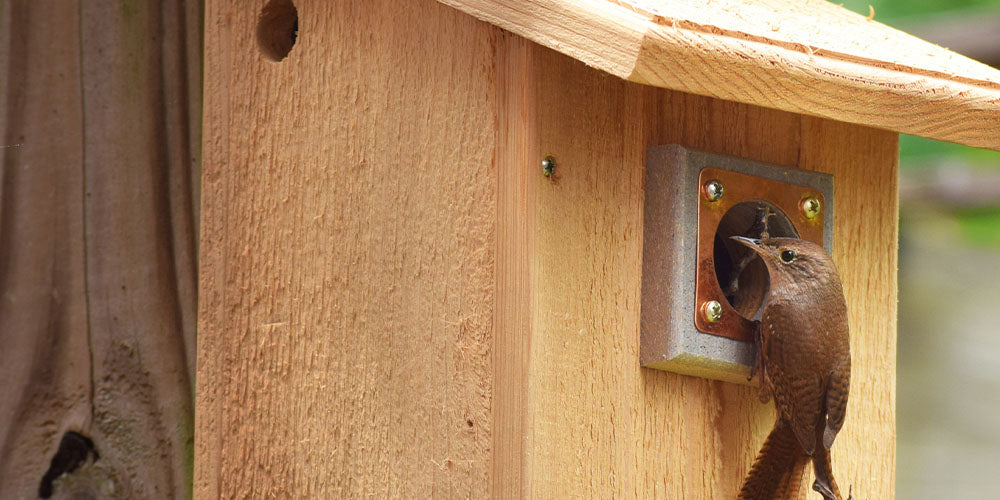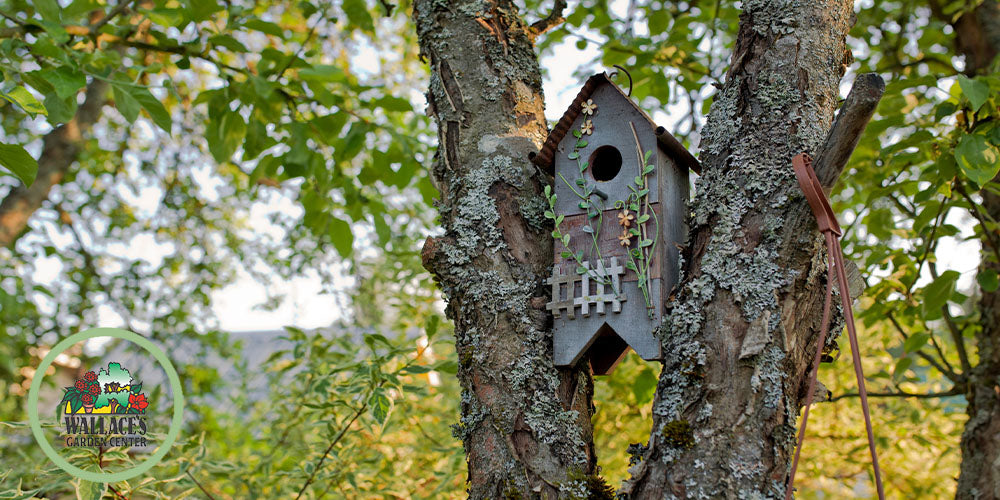This birdhouse guide is just what you need to keep those songbirds flocking to your garden this year!
The garden is just not the same without birds, and getting them to stick around is one of the challenges of being a bird lover. You know which high-quality seeds to put out for them, and how they like their water, but what about their housing? "How," you might be asking yourself, "can I provide birds with the best shelter year-round?" Luckily for you, this birdhouse guide is just what you need to keep those songbirds flocking to your garden this year! Birdhouse Styles
Birdhouse Styles
The coolest thing about birds is that, like us, they all have unique personal tastes when settling into an abode. Different species have different needs and requirements when it comes to their ideal shelter, so one style of birdhouse isn't going to fit all. Here is a list of common birds that love the houses we make for them and the features they will insist upon before moving in:
- Chickadees: One of our favorite backyard birds, the chickadee loves smaller nesting boxes, about 5½" X 8", with a hole approximately 1?" in diameter. Forget the perch on a chickadee box; not only do they simply prefer to live without them, but perches also make it easier for predators to get in! Chickadees also like to have soft nesting materials included within their homes and prefer to nest between 4-15 feet off the ground, so keep these in mind when prepping and hanging your birdhouse.
- Bluebirds: Another stunning songbird, bluebirds also like smaller nest boxes with entry holes of about 1 ½". Keep the perches off these ones, too, and make sure the front is about 5" wide with at least 5" - 8" of space available underneath the entry hole.
- Wrens: House wrens are cavity nesters and will nest just about anywhere. Like chickadees, they're attracted to birdhouses with an entry hole of around 1?" in diameter. Anything bigger will attract larger birds, like sparrows, that can take over the birdhouse. Larger birds will also be attracted to birdhouses with perches, so, yet again, leave them off of any houses meant for wrens.
Other birds that enjoy nesting in birdhouses include woodpeckers, owls, house finches, sparrows, warblers, flycatchers, ducks, and swallows. Before you go birdhouse shopping, make sure you know what each of them likes and how to best attract your desired birds to your garden!
 How to Build a Birdhouse
How to Build a Birdhouse
If you're handy with power tools and looking to build the best birdhouse on the block, you can find plenty of great birdhouse plans online that will help you build the perfect house for each bird variety. These more detailed plans will include specific instructions, such as exact dimensions and ideal hole cut-out size, so it's definitely worth doing your research if you want to go the DIY route. However, there are a few general tips to keep in mind when building your own birdhouse that will help you keep your nesting birds happy and safe:
- Use natural wood: Birds are drawn to wood birdhouses because they are natural and resemble cavities in trees. Cedar is an especially popular choice! If you do decide to paint, use colors like blue, black, green, and silver, as they're known to attract birds.
- Don't paint the inside: The fumes released by paint or wood stains inside your birdhouse's enclosed interior can seriously harm baby birds.
- Leave gaps between walls to allow heat to escape: Those closed-in spaces can get hot and stuffy during the spring and summer months!
- Leave a drainage hole for rain: Leaving a place for water to drain out will help keep your birds dry inside their new home and prevent mold growth. Birdhouse roofs should also be slanted to allow for better water run-off.
 Make it a family project or a fun kids activity on a snowy day with Build Your Own Kits from Wallace's!
Make it a family project or a fun kids activity on a snowy day with Build Your Own Kits from Wallace's!

 How to Make Your Birdhouse Blend In
How to Make Your Birdhouse Blend In
